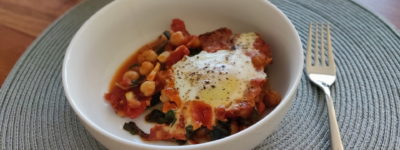When I was in culinary school, my favorite course was Butcher Shop. I don’t remember the actual name of the class, but even our chef referred to it as Butcher Shop.
As you can well imagine, Butcher Shop was all about meat. We learned how to break down whole animals into smaller cuts you buy at the market; we learned how to filet and debone meat to minimize waste; we learned how to make sausage; and we learned how to cure meat.
Meat Curing Methods
There are two basic ways to cure meat: wet and dry. While it is possible to do both at home, dry curing often requires climate control (i.e. temperature and humidity) which is difficult to accomplish at home without special equipment. I will briefly describe both methods, but for the purposes of this post we are going to focus on wet curing.
Wet Curing
Wet curing is where the meat is soaked in or injected with a salt brine, then cooked after curing. The curing time is relatively short; from a few hours to about a week.
A classic Easter ham or corned beef are examples of wet curing.
Dry Curing
Dry curing is where the meat is packed in a salt mixture to cure, but is typically not cooked after curing. The curing time for dry-cured meats is relatively long; from about a week, to several month or even a couple years.
Salami and Prosciutto di Parma are examples of dry curing.
The Curing Process
The Brine
Brine by definition is simply a solution of water and salt. However, while technically possible, brining in just salt water is rather boring.
Most brines have salt and sugar (typically brown sugar) and a mix of spices. Aromatics such as garlic and onion are not uncommon.
Most brines will also have curing salt. Aside from “curing salt”, it goes by a few other names: TCM (Tinted Cure Mix), pink salt (so named because it is tinted pink to distinguish it from standard table salt), Prague Powder #1. This is a mixture of ordinary table salt (93.75%) and sodium nitrite (6.25%). If you have a medical requirement to avoid nitrates, or simply an aversion to using them, this ingredient is completely optional. Just know that your meat will not have the rosy pink color you are used to seeing when you cut into your ham or pastrami.
Many brine recipes that I have seen and used are a 12% salt solution. A large part of the reasoning behind this is that Listeria is killed by a 12% salt solution. Most other harmful bacteria are killed at much lower salt levels. I find a 12% salt solution to be too salty for the finished product, especially ham/pork, and end up having to “desalinate” it in a fresh water bath before cooking. Besides, Listeria will be killed by the cooking process. I usually make my pork brine at 6-8% salt solution. Beef, for whatever reason, tends not to taste too salty at 12%.
When making brines at home, I usually measure my water by weight, which makes the salt calculation very simple, and I also use half water and half ice, which helps to cool the brine quickly. Otherwise you have to wait for the brine to cool before putting the meat in it.
Add your water, salt, sugar and spices/aromatics to a pot and bring them just to a boil. Make sure the salt and sugar are fully dissolved and add the ice. By the time the ice is fully melted, the brine should be about room temperature.
The Curing
The curing process is quite simple: put the meat in a sealable container, pour the brine over it, seal the container and stick it in the back of your refrigerator for a week.
That being said, a little forethought and planning needs to go into the selection of your container. It obviously needs to be large enough to contain the piece of meat, but ideally shouldn’t be overly large or overly small. If possible, it is very helpful if the container has a lid that forms an air/water tight seal.
Once you have your ideal container picked out, put your to-be-cured piece of meat in it, fill it completely full of water, then take the meat out. Now weigh the water and add 10%. You will need half this weight in water and half in ice to make your brine. Scale your salt, sugar and spices accordingly.
If you simply put the meat and brine in the container, depending on the size of the piece of meat, you should plan on letting it cure for about a week. It will take that long for the osmotic process to draw the brine into the center of the meat. An exceptionally large piece of meat (e.g. a full, bone-in fresh ham) may take a bit longer.
Once in the brine, if the meat floats and is partially out of the brine, it needs to be weighed down so that it remains submerged. This is easily accomplished by laying an inverted plate (the heavier, the better) on the meat to keep in submerged.
To expedite the curing process, I highly recommend getting a meat/brine injector. This is essentially a giant syringe for injecting the brine into the center of the meat. These can be easily found online for unter $20 / 20€. Simply inject brine in a grid pattern of about 2cm / 1″. This will reduce the required brining time by about half.
Cooking
Once the meat has cured, remove it from the brine and rinse it with fresh water. Pat it dry and cook as desired. Hint: Smoking is always good for cured meats.
Recipes
Here are some recipes for basic ham and corned beef / pastrami brines.
